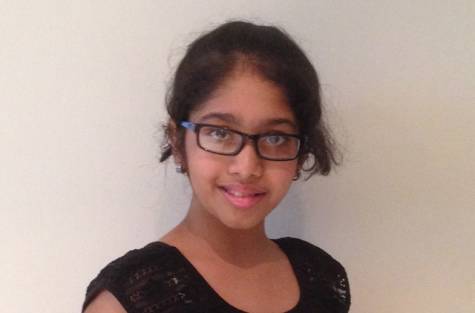Student Scientist from UAE selected by NASA to send her experiments to Space!
 Sharjah- It’s not an everyday news when the NASA dreams of eleven year old students come true! You read it right. Eleven-year-old Prerna Pai is the only student from the United Aab Emirates who has got two of her experiments accepted for launch into space under a Cubes In Space Programme (CIS) programme for budding young scientists.
Sharjah- It’s not an everyday news when the NASA dreams of eleven year old students come true! You read it right. Eleven-year-old Prerna Pai is the only student from the United Aab Emirates who has got two of her experiments accepted for launch into space under a Cubes In Space Programme (CIS) programme for budding young scientists.
This programme invited entries from students from around the world in the age group of 11- 14 to develop experimental payloads for space. About 100 of the selected experiments will be fired up into the space in a sounding rocket to be launched by CIS on June 26, 2014.
As per the CIS website information, a sounding or research rocket transports scientific instruments into space to take measurements along a non- orbiting and parabolic path or trajectory. This means that the rocket flies up and then flies back down to Earth along an arced path. A total of 75 American students and 25 students from the rest of the world are selected under the programme.
CIS Programme happened in May in partnership with Rubik Learning Initiative, Colorado Space Grant Consortium’s RockSat-C programme and idoodle software.
Prerna, the 7th grader at Sharjah’s Delhi Private School has been regularly participating in NASA student activities such as studying the solar flare last year. She is on the NASA mailing list.
Prerna, who plans to be a scientist when she grows up, said excitedly “I had to think a lot when I learned about this contest and sent CIS many proposals. Our science teacher has always encouraged me to think out of the box and that has inspired me. So, once my ideas were selected, they sent me a kit into which I had to place my experiments and mail it to them. That time I was so thrilled by the news that I even dashed off a thank you note to CIS.â€Â
Prerna submitted her two experiments which she had named- To stick or not to stick and Time and Pressure.
To stick or not to stick is about studying the manner in which different adhesives are likely to behave in space in the absence of atmospheric pressure. To explain the same, Prerna used a thermocol cube of 12 pieces in which each corner was stuck using a different kind of adhesive such as modelling clay, cello tape, wax, metal wire, school glue, thread, and super glue. This experiment focuses on how each kind of adhesive acts in the space and whether the sides of the cube will open up or further stick depending on the nature of the adhesive once in the space.
Time and Pressure involves two tiny bottles, one made of plastic, another of glass  sealed with a modelling clay cork and placed in a cube. This experiment focuses on how the bottles react to lack of atmospheric pressure – Will they disintegrate, remain intact or get damaged? That is testing pressure.
For the second part of this experiment that involves time, she took two identical sports watch set precisely to the same time. Then she took off the straps of one watch and stuck the dial to the side of the cube that will be sent into space. The second watch remains with her. She explained further saying, “When the watch returns from space, I’ll check if it gets slower or faster so as to establish whether time moves faster or slower in space going by Einstein’s theory of relativity.
Once the experiments are back from space and get mailed to her, she intends to begin research on the results, film the outcomes, and mail them back to CIS.
As of now, the budding scientist is waiting with bated breath for June 26th, when the sounding rocket will be launched into space.
What is Cubes In Space?
Cubes in Space is a STEM- based education programme for pupils in the age group of 11- 14 years. It provides pupils a no- cost opportunity to design an experimental payload to be launched into space.
STEM refers to the academic disciplines of science-technology-engineering-mathematics.
Utilising formal or informal learning environments, students and educators were exposed to engaging content and activities in preparation for the design and development of an experimental payload to be integrated into a small cube. These cubes will launched into space on a sounding rocket from NASA’s Wallops Flight Facility on Wallops Island on 26 June, 2014.
Leveraging the excitement of such a space exploration, pupils and educators will learn about the methodology for taking an idea from design through the review process.
NASA believes that the integration of language and arts into traditional STEM education strategies is critical for well- rounded education.
If you have any query or need any assistance regarding the preparation or other details of any entrance examinations like jee/ ntse/ kvpy/ bitsat etc., then please fill the query form below and our executives will be happy to help you!
- Excited
- Fascinated
- Amused
- Bored
- Sad
- Angry
